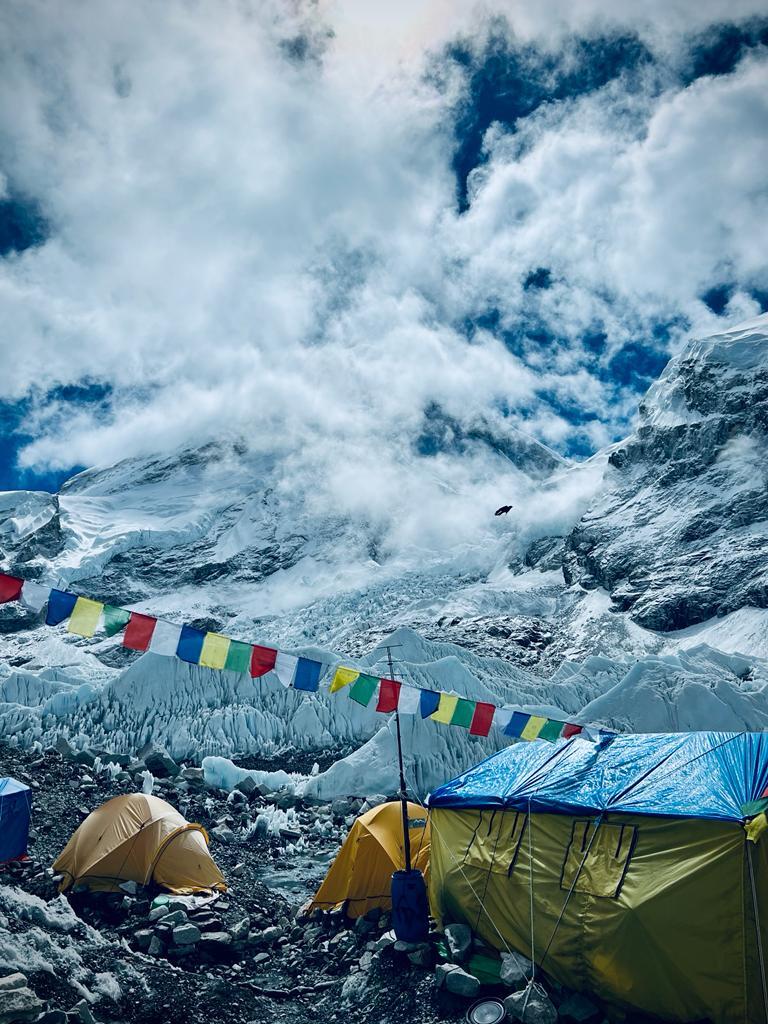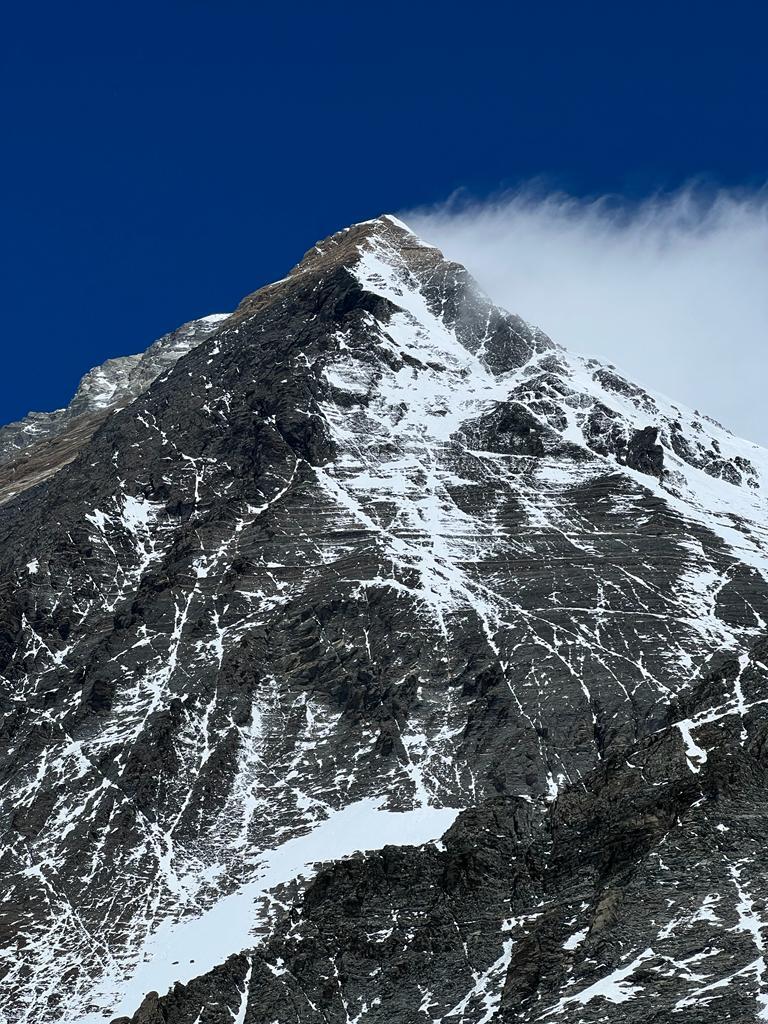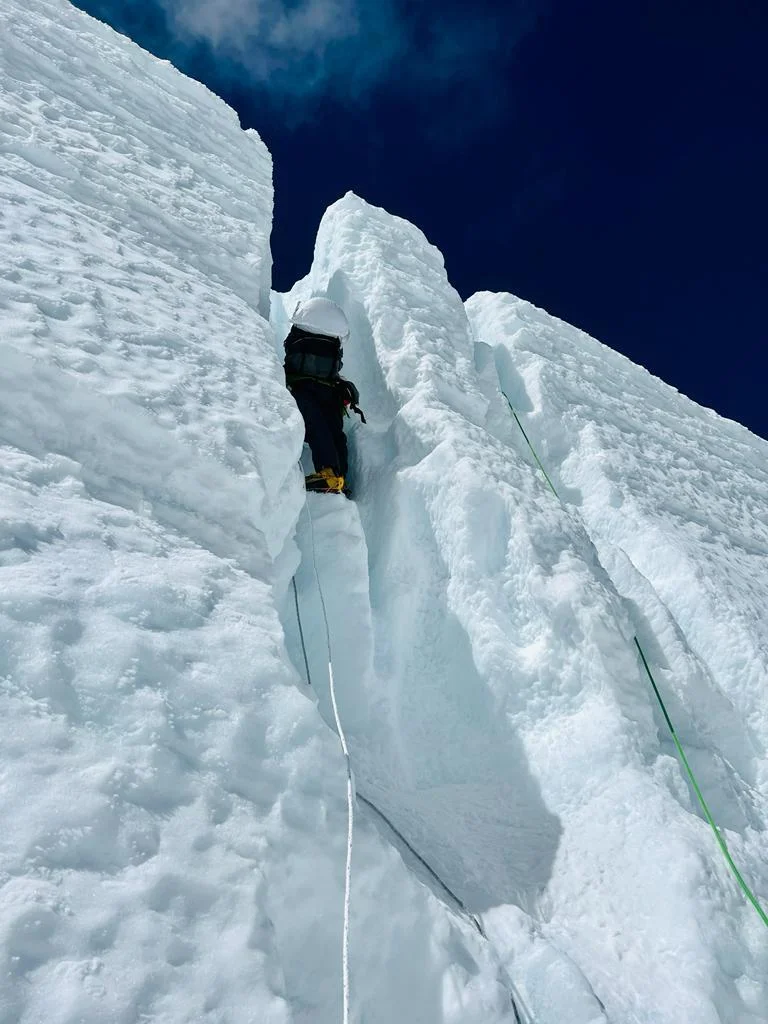We can all get so fixated on our goals that we forget how important the journey towards them is. In my previous blog I talked a little about how I discovered the Compass for Life model and introduced my Super North Star – climbing Mount Everest. This week, as we continue to make our way around the points of the Compass, we will explore the East and South cardinals.
The East cardinal is where we explore the fundamentals of our character – our values, beliefs, behaviours and how we commit to live by them. This is our Ethos.
The South cardinal relates to the Strategist. This is where you build the scaffolding to get to your Super North Star.
We intuitively know that having a plan is the key if we are to translate our dreams into reality. However, I was surprised at how powerful meshing a solid Strategy with an Ethos that is aligned to your purpose could be. That power came from balancing these two cardinals. What impacted me most of all from this discovery was that finally, after many years of setting myself fantastic goals, I began to recognise the value in the journey.
Like many, I had often rolled my eyes when people started talking about their ‘journey’ and for some it might sound a little trite even now. In this blog I hope to explain how the Compass For Life model taught me the importance of the journey and that reaching the summit is just the icing on the cake.

The South Cardinal – The Strategist
From my previous post you will recall the picture of the climber just metres from standing on the summit of Everest. As I looked at that image as a child, and even through early adulthood, I saw success, fulfilment, and achievement. The climbing looked difficult, but I didn’t see the hard work. It was only as I started out on my own journey toward Everest that I began to see the image differently. The qualities of high performance and excellence began to emerge – no one gets to the summit of Everest by coincidence. Now, as I look at my own summit pictures, I see the culmination of a journey which fundamentally changed me as a person.

Whether it is mountaineer on the summit, the athlete on the podium, or the band that has seemingly come from nowhere to hit #1, what we are seeing in these snapshots is the consequence of a well thought out Strategy and an uncompromising commitment to its execution. The Compass For Life model acted like a guide as I set about creating my own Strategy for success.
Firstly, I picked apart my previous attempt on Everest which unraveled just 300m from the summit. A combination of finding myself alone, with an unserviceable oxygen regulator, in deteriorating weather forced me to turn back seemingly within touching distance of the summit.
An almost forensic analysis of that previous attempt, coupled with a very honest assessment of my new starting point several years after that attempt uncovered several uncomfortable truths that I had to face. For the first time I recognised that I was responsible for not reaching the summit. Not the weather, not my oxygen system. I took 100% ownership of my previous failure and my new Strategy included ways to mitigate what I had previously considered to be the reasons for not reaching the summit.
Thus, for my return to Everest, I made sure that I had access to the latest weather forecasting technology, sufficient spares of key oxygen equipment, and increased the level of sherpa support.

It was only through looking at my previous experiences factually and dispassionately that I was able to put systems in place to avoid falling into the same traps again. My Strategy included several key milestones which set out an achievable path to the foot of Everest. It included fundraising targets, and markers to assess my physical preparation. Part of the Strategy was to challenge myself on a technical mountain in the Himalayas in advance of Everest. Not only did this test give me confidence in my preparation, it afforded me a tantalisingly close view of Everest itself. As I looked across to the summit, I couldn’t help but visualise myself taking those triumphant last few steps towards the highest point on the planet. The power of visualisation is well known, so I made sure that this image was burned into my mind. This simple ‘hack’ really did help keep me going when things got tough.
As my Strategy began to crystallise, I found that I had developed the support network required to make an expedition like this achievable. This small team of key people provided practical support, advice, and guidance. Over time it gradually began to look possible.

The East Cardinal – Ethos
With a Strategy in place, it was time to make an honest appraisal of where I was. Years had passed since I had last been climbing in the Himalayas. I just had to look at my waistline to get a sense of how much had changed in that time. It was time to explore the East cardinal.
At a personal level our Ethos is the principles or values that define our approach to life. I asked myself, ‘What are the key traits of those who succeed in what I am trying do?’. ‘What are the underlying fundamentals that I need to develop?’.
Like a Super North Star, your Ethos should be simple, clear, and easy to articulate. It is personal to you, you own it. To me the key themes of discipline, consistency and perseverance became more than just buzzwords. I set about making changes in my daily life that were aligned with what it takes to be successful on Everest and I ingrained these changes by making them a habit.
‘You can’t over-estimate the unimportance of practically everything’
John Maxwell

These behaviours can’t simply be ‘switched on’ when required. They became like muscles I exercised. Rather than talk about my plans, I set about demonstrating progress. I viewed each milestone in my Strategy as a promise to myself and did everything I could not to break those promises. By holding myself to this new standard, by doing the things I said I was going to do, I experienced profound personal change.
I became happily consumed by my goal and was ruthless in looking at my normal daily routines and asking, ‘Is this taking me towards my Super North Star?’. I eliminated everything that wasn’t essential, freeing myself from procrastination and making time for what was important – the things that would drive the biggest advances. As my departure date approached, I was asked by a local journalist, ‘What is your job?’. Without pausing to think I replied, ‘I am a high-altitude mountaineer’ – this was a sure sign that my Compass was in alignment!
Keeping your Compass aligned in the face of challenge
Of course, progress isn’t linear. There are always going to be setbacks, and I soon learned that effort in does not necessarily equal output achieved. There were undoubtedly aspects of the expedition that didn’t light my fire, and I had to really dig deep for the motivation to give these areas the focus they required. When progress stalled, I would return to the Compass and the East cardinal, my non-negotiable values, to help navigate around the obstacle.
Despite the setbacks, frustrations, and sacrifices I had to endure in run up to my departure to Nepal, my passion for Everest remained. Despite outward confidence, I knew that even with perfect preparation things could go wrong. With a myriad of factors beyond my control that could de-rail any summit bid, I had to become comfortable with the prospect of failure.
If I found myself dwelling on the negative, I would remind myself how much joy I had found in identifying and pursuing my goal. Before even setting foot on the mountain, I could see that I had grown as a person. Whatever the outcome, I would learn from the expedition and could use that knowledge to help others on their own journey. I had rekindled old friendships and forged new ones. I had been more ‘present’ than I had been for years, and I woke up each morning excited by the prospect of progress towards Everest.
Whatever the result, I had ‘backed myself’. By keeping those promises to myself by hitting each of the milestones I had set en route, I had experienced a profoundly positive psychological shift. Naturally, I craved the summit. But, like the athlete on the podium, I knew that the real growth and learning occurred before that moment. The journey to get to the mountain had been a rollercoaster, and the adventure hadn’t even begun.

The considerable difficulties faced in getting to the mountain would be dwarfed by the challenges on the mountain itself. I would soon be tested in the most unforgiving environment on the planet.

The final instalment of this blog series will look at what it takes to succeed when we ‘step into the pressure zone’. We will explore the West cardinal – the Warrior – and delve a little deeper into the resilience and strength of character required to get to the top of the world.
Follow Compass For Life on social media to come along on this journey to the top of the world: Twitter, LinkedIn
